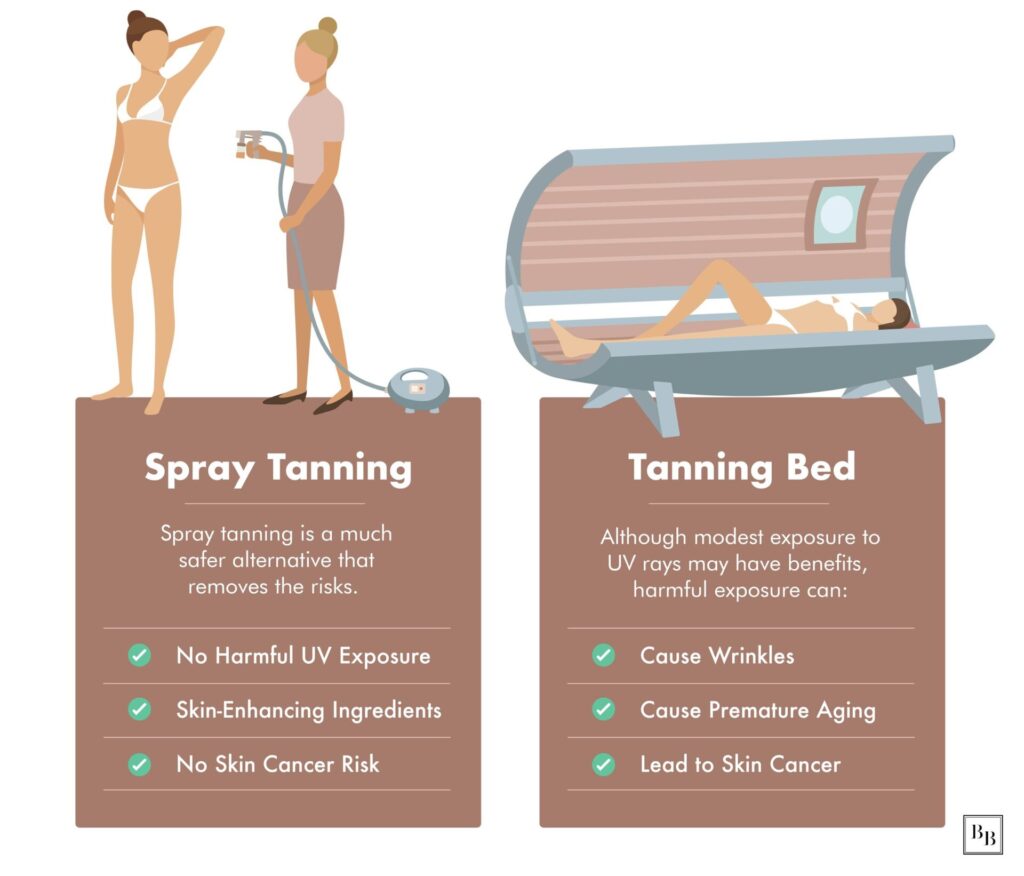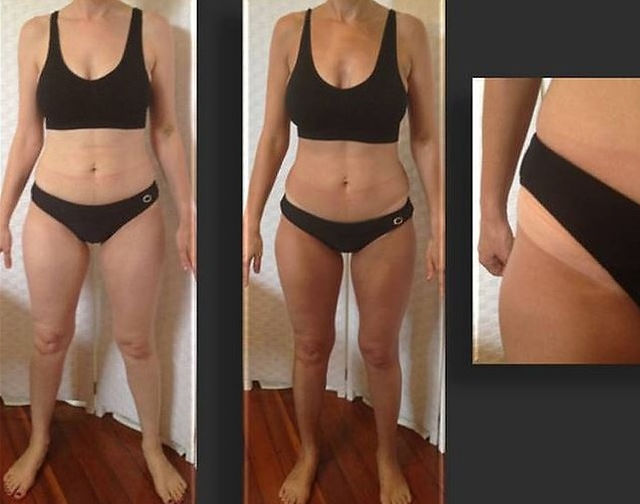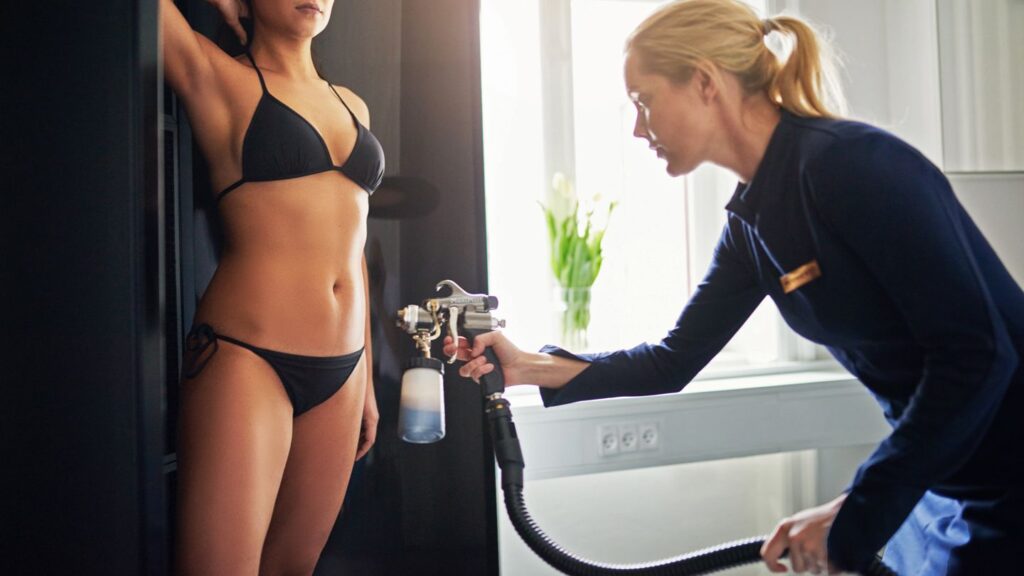If you’ve ever considered getting a spray tan, you’ve probably had the thought cross your mind: Are spray tans safe? It’s a valid concern, as we want to ensure that any beauty treatment we undergo is not only effective but also safe for our health. In this article, we will explore the safety of spray tans and provide you with all the information you need to make an informed decision. So, if you’re curious about the potential risks and benefits of spray tanning, keep reading to discover the truth behind this popular beauty trend.
Overview
If you’re looking for a healthy glow without the harmful effects of UV rays, spray tans can be a great option for you. Spray tanning is a popular method of achieving a sun-kissed look without exposing your skin to the damaging effects of the sun or tanning beds. However, like any cosmetic procedure, it’s important to understand the process, potential risks, and take necessary precautions to ensure a safe experience. In this article, we’ll delve into the world of spray tans, explore their application methods, discuss the common ingredients used, and address any concerns you may have.
Understanding Spray Tans
What is a spray tan?
A spray tan is a cosmetic procedure that involves applying a solution to the skin to create a temporary bronzed or tanned appearance. The solution contains an active ingredient called Dihydroxyacetone (DHA), which interacts with the amino acids in the top layer of the skin to produce a brown color. Unlike traditional tanning methods, such as sunbathing or tanning beds, spray tans do not involve exposure to UV radiation.
How is a spray tan applied?
Spray tans can be applied in various ways, including using airbrush machines, spray booths, or handheld spray guns. The tanning solution is usually sprayed onto the skin in fine mist form, allowing for an even and natural-looking application. The technician assisting you will ensure that the solution covers all desired areas, adjusting the spray patterns and intensity as needed to achieve the desired result.
Common ingredients in spray tans
Spray tanning solutions typically contain several ingredients alongside DHA. These may include moisturizers, emollients, botanical extracts, vitamins, and preservatives. It’s important to note that the ingredients can vary among different brands, so it’s essential to read the labels and consult with your spray tan technician if you have any specific concerns or allergies.

This image is property of images.squarespace-cdn.com.
Potential Risks and Concerns
Skin irritation and allergic reactions
While spray tans are generally considered safe, there’s a small risk of skin irritation or allergic reactions. Some individuals may be more prone to sensitivities or have pre-existing skin conditions that could be aggravated by certain ingredients in the tanning solution. To minimize the risk, it’s recommended to perform a patch test before your first spray tan session to check for any adverse reactions.
Inhalation of spray tan mist
During the spray tan application, it’s possible to inhale the mist containing DHA and other ingredients. While the risk of inhaling significant amounts is low, it’s still important to take precautions. Proper ventilation, such as using extraction fans or open windows, can help reduce the concentration of airborne particles. Wearing protective gear, such as a nose and mouth mask, is also advisable.
Eyelid and eye safety
Due to the sensitive nature of the eyes and the risk of irritation, it’s crucial to protect them during a spray tan session. This often involves wearing eye protection, such as disposable goggles or special eyewear provided by the technician. Eye protection shields your eyes from the spray tan solution and prevents any potential damage or discomfort.
Sunburn and sun protection
While spray tans provide a bronzed appearance, they do not offer any UV protection. It’s important to remember that a spray tan does not substitute for sunscreen or sun protection measures. If you plan to spend time outdoors, make sure to apply sunscreen with an appropriate SPF to protect your skin from harmful UV rays.
DHA safety
DHA, the active ingredient in spray tans, has been approved by the FDA for external use on the skin. However, concerns have been raised about its safety when inhaled or ingested. The FDA has not approved DHA for use on the lips, as the potential risks are still being studied. To avoid accidental ingestion, it’s recommended to protect your lips with a lip balm or petroleum jelly during a spray tan session.
Safety Precautions and Recommendations
Patch testing
To ensure your safety and minimize the risk of adverse reactions, it’s crucial to perform a patch test before your first spray tan. Apply a small amount of the tanning solution to a discreet area of your skin, such as the inner arm, and wait 24 hours to check for any signs of irritation or allergic reactions. If no adverse effects occur, it’s generally safe to proceed with a full spray tan application.
Proper ventilation
Ensuring proper ventilation is essential to minimize the inhalation of spray tan mist. If you’re getting a spray tan at a salon or spa, make sure they have adequate ventilation systems in place. If you’re doing a spray tan at home, ensure you have sufficient airflow by opening windows or using fans to remove airborne particles.
Avoiding contact with eyes and mucous membranes
Protecting your eyes and mucous membranes is crucial during a spray tan. Wear eye protection, such as goggles or eyewear provided by the technician, to shield your eyes from the spray tan solution. Avoid getting the solution in your nose, mouth, or other sensitive areas to prevent irritation or ingestion.
Protecting sensitive areas
Certain areas of your body may be more sensitive than others, such as your lips, nipples, or genitals. To protect these areas from potential irritation, consider using barrier creams or covering them with protective clothing or adhesive patches during the spray tan application.
Use of protective measures
During the spray tan application, utilize protective measures to minimize contact with the tanning solution. Disposable undergarments, hair caps, and nose/mouth masks can help safeguard areas that should not come in direct contact with the solution.

This image is property of static.wixstatic.com.
Special Considerations
Pregnancy
If you’re pregnant, it’s essential to consult with your healthcare provider before getting a spray tan. While there’s limited evidence suggesting any harm to the fetus, it’s still prudent to discuss the potential risks and benefits with a medical professional. Some pregnant women may choose to avoid spray tans due to concerns about ingredient safety or potential adverse reactions.
Asthma and respiratory conditions
Individuals with asthma or other respiratory conditions should also take precautions before getting a spray tan. Some tanning solutions contain airborne particles that may trigger respiratory symptoms. If you have a respiratory condition, consider consulting with your healthcare provider or allergist to determine the best course of action to prevent any potential complications.
Skin conditions and allergies
If you have pre-existing skin conditions, such as eczema, psoriasis, or dermatitis, it’s crucial to inform your spray tan technician before beginning the session. Certain ingredients in the tanning solution may exacerbate these conditions or cause irritation. For individuals with known allergies, it’s essential to check the ingredient list and consult with your allergist if necessary.
Children and spray tans
Spray tans are generally not recommended for children under the age of 12. The developing bodies of children may react differently to the tanning solution, and the potential risks are not yet fully understood. If you’re considering a spray tan for your child, consult with their pediatrician to ensure it’s safe and appropriate for their age.
Medication interactions
Some medications, such as acne treatments or certain antibiotics, may interact with the tanning solution and cause undesirable effects or skin reactions. It’s important to inform your spray tan technician about any medications you’re currently taking to ensure a safe and effective application. When in doubt, consult with your healthcare provider.
Expert Opinions and Research
What do dermatologists say about spray tans?
Dermatologists generally consider spray tans to be a safe alternative to traditional tanning methods. While they do not provide any UV protection, the absence of UV radiation reduces the risk of skin damage and premature aging. Dermatologists often recommend spray tans as a healthier option for achieving a bronzed look.
Studies on the safety of spray tans
Several studies have been conducted to assess the safety of spray tans. Overall, the consensus is that spray tans are safe when applied properly and the recommended precautions are followed. However, more research is needed to fully understand the potential long-term effects and the safety of inhaling DHA during the application process.
Expert recommendations
Experts recommend following safety guidelines, such as patch testing, avoiding eye and mucous membrane contact, and practicing proper ventilation during spray tan sessions. Dermatologists also emphasize the importance of using sunscreen, even with a spray tan, to protect against harmful UV rays.

This image is property of images.everydayhealth.com.
Alternatives to Spray Tans
Self-tanning lotions and creams
Self-tanning lotions and creams are an alternative to spray tans that allow you to achieve a similar bronzed look at home. These products typically contain DHA and can be applied to the skin with your hands or a tanning mitt. Self-tanning lotions may be a preferred option for individuals who want more control over the application process.
Bronzing powders and bronzers
Bronzing powders and bronzers are popular cosmetic products that can provide a temporary tanned appearance to the face and body. They come in various forms, including pressed powders, loose powders, creams, and sprays. Bronzers are a quick and easy way to enhance your complexion and add a sun-kissed glow without the commitment of a spray tan.
Professional tanning services
If you prefer a professional touch and a customizable tan, you can opt for a professional tanning service. These services are typically offered at salons or spas and involve skilled technicians who can tailor the tan to your preferences. Professional tanning services often use high-quality products and provide a more personalized experience.
Choosing a Safe Spray Tan
Finding reputable spray tan providers
When choosing a spray tan provider, it’s important to do your research. Look for reputable salons, spas, or beauty centers that have experienced technicians and positive customer reviews. Personal recommendations from friends or family can also be helpful in finding a reliable provider.
Asking about ingredients and safety measures
Prior to your spray tan appointment, don’t hesitate to ask the provider about the ingredients in their tanning solution. If you have any specific concerns or allergies, inform the technician in advance. Inquire about safety measures, such as proper ventilation and eye protection, to ensure a safe and comfortable experience.
Reading customer reviews and testimonials
Reading customer reviews and testimonials can give you valuable insights into the quality of service and the overall satisfaction of previous clients. Look for feedback specifically related to safety, cleanliness, and the professionalism of the spray tan provider.
Checking for certifications and qualifications
Some spray tan providers may have certifications or qualifications that demonstrate their expertise and commitment to safety. Look for certifications such as the National Spray Tanning Professional Association (NSTPA) or the Spray Tanning Association (STA), which indicate that the provider has undergone training and adheres to industry standards.

This image is property of health.clevelandclinic.org.
Aftercare and Maintenance
Skin preparation and exfoliation
Proper skin preparation is essential for achieving a long-lasting and even tan. Exfoliate your skin prior to a spray tan session to remove dead skin cells and create a smooth surface for the tanning solution. Avoid using oil-based exfoliants or moisturizers as they can act as barriers and prevent the tanning solution from adhering properly.
Moisturizing and hydration
Moisturizing your skin regularly after a spray tan helps prolong the lifespan of the tan and keep your skin hydrated. Use a gentle, non-oil-based moisturizer to prevent any potential fading or unevenness. Staying hydrated by drinking plenty of water also contributes to the overall health and appearance of your skin.
Avoiding excessive sweating and swimming
Excessive sweating, swimming, or prolonged exposure to water can cause the tan to fade more quickly. To maintain your spray tan, try to avoid activities that may result in excessive perspiration or prolonged water exposure. If sweating or swimming is inevitable, pat yourself dry instead of rubbing to minimize any potential tan streaking.
Prolonging the tan’s lifespan
To extend the lifespan of your spray tan, there are a few additional steps you can take. Avoid exfoliating aggressively or using harsh products that may strip away the tan. When showering, use lukewarm water and gentle cleansers. Applying a gradual tanning lotion or tan extender can also help maintain the color and ensure a more even fade.
Conclusion
Spray tans can be a safe and effective way to achieve a bronzed look without exposing your skin to harmful UV rays. By understanding the application process, potential risks, and safety precautions, you can enjoy the benefits of a spray tan with confidence. Remember to follow expert recommendations, choose reputable providers, and take care of your skin before and after the tan to maintain its longevity. With the right knowledge and precautions, you can enjoy a healthy and beautiful tan all year round.


